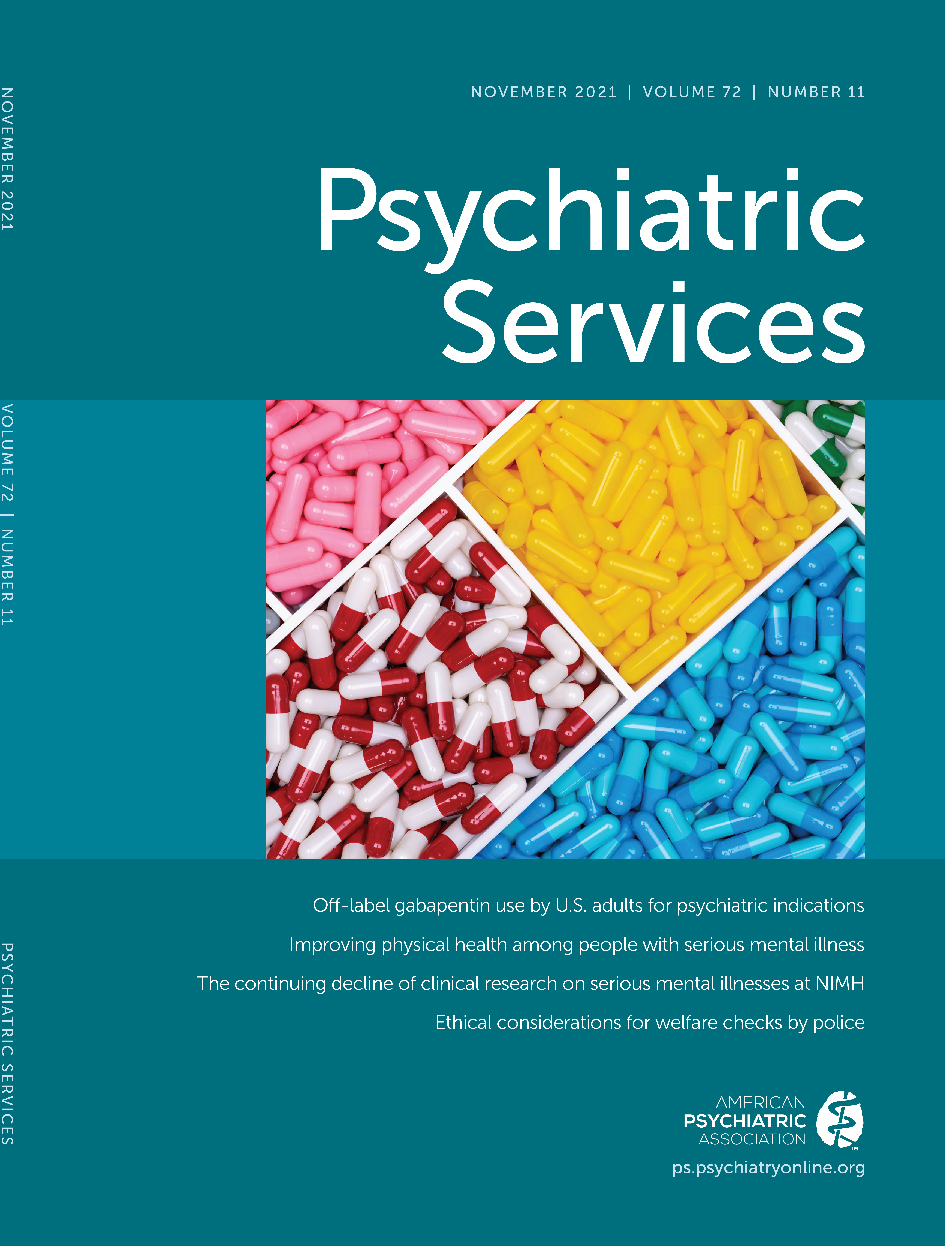Advanced Practice Providers and Buprenorphine Access in the United States After the Comprehensive Addiction and Recovery Act
TO THE EDITOR: Before 2017, buprenorphine prescribing was restricted to physicians. This changed after the passage of the Comprehensive Addiction and Recovery Act, which allowed nurse practitioners and physician assistants (NPs/PAs) to acquire buprenorphine waivers (1). NPs/PAs adopted these waivers quickly, especially in rural areas (2). To assess the impact of NP/PA waiver adoption on buprenorphine access, we measured changes in distance and travel time to the nearest buprenorphine prescribers attributable to NP/PA waiver adoption nationally.
We obtained the dates and practice locations of buprenorphine waiver approval for all listed clinicians from 2005 to 2019 from the Substance Abuse and Mental Health Services Administration. We used the Google Maps application programming interface to geocode provider locations and then estimated the road distance and driving travel time from the centroid of all five-digit ZIP code tabulation areas (ZCTAs) nationally (N=32,989) to the closest listed buprenorphine prescriber by road distance. We calculated road distance and travel time under two scenarios: using the listing of all waivered buprenorphine prescribers as of March 2019 (physicians and NP/PAs) and using the same listing without NPs/PAs as a counterfactual. We classified ZCTAs on the urban-rural continuum (referred to as “metro,” “smaller metro,” and “rural”) based on the county where most ZCTAs resided (3). The number of people potentially affected was calculated with 2018 U.S. Census data.
In March 2019, the mean travel time to the nearest buprenorphine medical provider in a metro area was 11.1 minutes (20–80 percentile range 4.1–16.3), compared with 33.9 minutes (20–80 percentile range 16.2–47.8) in rural areas (see table in online supplement).
Of 32,989 ZCTAs, travel times were lower in 8,432 due to the location of waivered NPs/PAs (online supplement). Of these ZCTAs, 21.4% were in metro areas, 29.1% were in smaller metro areas, and 49.4% were in rural areas. The overall mean improvement in travel time from including waivered NPs/PAs was 7.8 minutes (20–80 percentile range 0.9–11.8), with the largest reduction in rural areas, which saw a reduction of 11.4 minutes (20–80 percentile range 1.3–19.9) (see figure in online supplement).
Rural areas had the largest population of residents with large reductions in travel time: 4 million rural residents had an improvement of >10 minutes (56.7% of all with >10-minute reduction) and 2.2 million with >20-minute reduction in travel time (77.5% of all with >20-minute reduction).
Nearly one-quarter of ZCTAs (N=8,432) showed reduced travel distance to the nearest buprenorphine prescriber associated with the presence of NP/PA prescribers. Although most gains were modest, the substantial heterogeneity suggests that NPs/PAs play a significant role in improving access to buprenorphine therapy in key underserved areas.
Approximately half of the ZCTAs (N=4,169) positively affected by NPs/PAs were rural and had much longer travel times to buprenorphine facilities. Although NPs are well positioned to help in rural and low-income areas (4), state restrictions on scope of practice for prescribing likely inhibit NP/PA buprenorphine waiver uptake (2), which may impose meaningful limitations in rural residents’ ability to access buprenorphine.
The study had limitations. We did not capture distance to unlisted buprenorphine providers, so our travel estimates may be biased upward. In addition, ZCTA-level analysis only approximates access for individuals.
1 Summary of the Comprehensive Addiction and Recovery Act. Rockville, MD, American Society of Addiction Medicine, July 19, 2016. https://www.asam.org/Quality-Science/publications/magazine/read/article/2016/07/19/the-comprehensive-addiction-and-recovery-act---highlights-for-members. Accessed Nov 15, 2020Google Scholar
2 : In rural areas, buprenorphine waiver adoption since 2017 driven by nurse practitioners and physician assistants. Health Aff 2019; 38:2048–2056. doi: 10.1377/hlthaff.2019.00859Crossref, Google Scholar
3 NCHS Urban-Rural Classification Scheme for Counties. Hyattsville, MD, National Center for Health Statistics, June 1, 2017. https://www.cdc.gov/nchs/data_access/urban_rural.htm. Accessed Nov 15, 2020Google Scholar
4 : Primary care nurse practitioners and physicians in low-income and rural areas, 2010–2016. JAMA 2019; 321:102–105. doi: 10.1001/jama.2018.17944Crossref, Medline, Google Scholar



